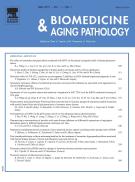Evaluation of psychopharmacological activity of ethyl acetate extract of Sarcostemaacidum (ROXB).voigt - 13/08/14
 , Sibi P. Ittiyavirah ⁎
, Sibi P. Ittiyavirah ⁎ 


Abstract |
Herbal medicines are gaining growing interest because of their cost-effective, eco-friendly attributes and true relief from disease condition. Sarcostemaacidum was documented in many folklore practices for various psychiatric conditions. It has been dealt with in detail in “SHRUSHRUTHA SAMHITHA”. Ethyl acetate extract of the whole plant Sarcostemaacidum (EASA) was evaluated for psychopharmacological effects, anti-psychotic, anxiolytic and CNS inhibitory activity. Anti-psychotic effects of EASA was assessed by condition avoidance response and Cataleptic scoring test using pole climbing and Bar test respectively. Elevated Plus maze (EPM) and Hole Board Apparatus (HBA) was employed for the anxiolytic activity while actophotometer was used to assess the CNS inhibitory activity. EASA (650mg/kg), haloperidol (5mg/kg) and 1% CMC was administered to the test,standard and control group respectively for Antipsychotic activity, while for anxiolytic and CNS depressant studies test, standard and control group receive EASA(650mg/kg), diazepam (2mg/kg) and 1% CMC respectively. It was found that EASA significantly enhance the latency period to climb the pole and the cataleptic score which indicates its suppression on CAR activity, which clearly confirms its anti psychotic activity, might be due to blockade of dopaminergic pathway. It was observed that EASA at a dose of 650mg/kg significantly increases the no. of entries in to the open arm in EPM as well as no. of head poking in HBA, which reflects its increase in exploratory behaviour which indicates the anxiolytic activity. Reduction in the locomotor activity in actophotometer indicates CNS depressant property of the drug.
El texto completo de este artículo está disponible en PDF.Keywords : Sarcostema acidum, Psychosis, Psychopharmacology
Esquema
Vol 4 - N° 3
P. 281-284 - juillet 2014 Regresar al númeroBienvenido a EM-consulte, la referencia de los profesionales de la salud.
El acceso al texto completo de este artículo requiere una suscripción.
¿Ya suscrito a @@106933@@ revista ?

